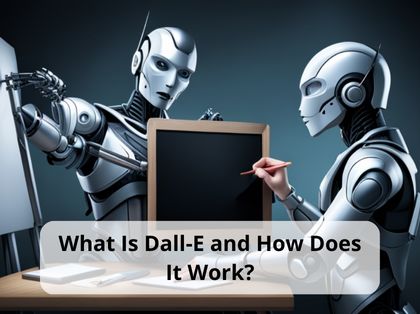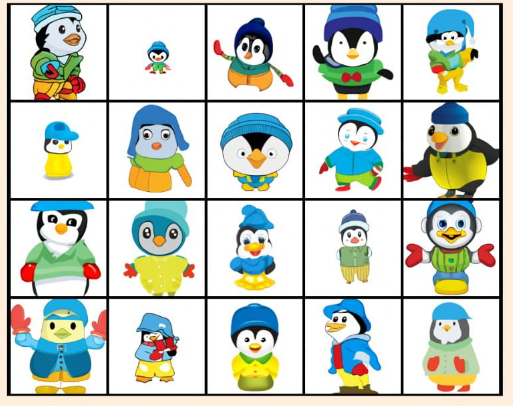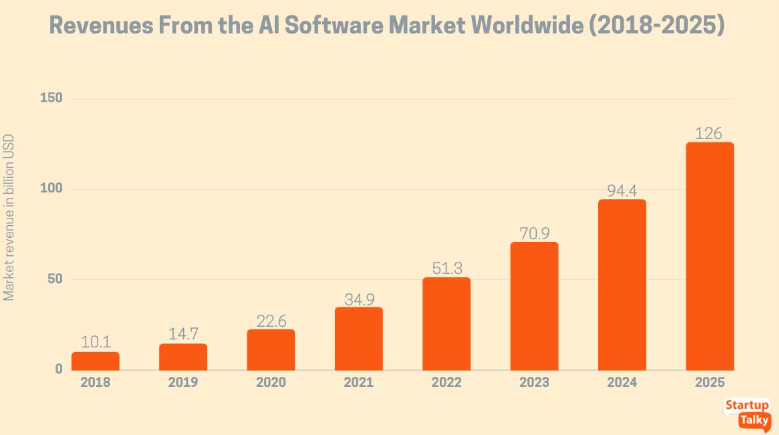
Have you ever thought that it would be possible when we decide to input any text and simultaneously it would convert or generate an image by deciphering or processing what we want to convey through the write-up? For example, you wrote about an armchair in the shape of an avocado. Then, the image you imagined while writing the above sentence would be generated in front of you after some time. Which seems pretty cool and exciting, right?
Now, you would be thinking about what made it possible to carry out this work and its mechanism. That is why here in this article, we will talk about everything related to DALL-E, the image-generating software developed by OpenAI and the theory behind its functioning.
What is DALL-E?
A 12-billion parameter version of the GPT-3, Dall-E is an artificial intelligence model developed by OpenAI capable of generating images from texts. It is the first artificial model that can carry out this phenomenon.
If you are now thinking about whether Dall-E can provide only simple input text illustrations, then you are pretty wrong. Dall-E can give rise to multiple illustrations with several alternatives on a single write-up. Interestingly, it could represent something more bizarre than what you imagined.
Dall-E is not subjected to only the generation of unique plausible images from various sentences. It can also explore other sides of a complex language structure input in its platform. So, let us look at some of them and see how they work towards it:

For instance, if there is a phrase containing multiple objects and different relationships, like a baby penguin wearing a blue hat, red gloves, green shirt, and yellow pants.
Dall-E does not confuse all the apparel with each other but rather combines each piece of information without mixing them up. However, it's seen that the proper workability of Dall-E depends on how captions have been arranged and on avoiding misrepresentations.
Dall-E is found to quickly draw both the internal and external structures of an object in an exemplary and exquisite manner like never before. But, the details that Dall-E shows can only be visible if referred to or viewed up close.
While describing a task of translating text to an image, there may be instances where a single caption could give rise to thousands of plausible images, and determining a single image would be hard. Moreover, there could be places where a particular addition of something could make the image more attractive and pleasant to see, but the user may not specify that detail in the caption.
This is where Dall-E stands relatively superior to other 3-D rendering machines or platforms where you can mention every detail ambiguously. For instance, if your text indicates that an image must include a particular detail that is not clearly stated, then Dall-E fills that detail in that excluded space and renders your image picture-perfect.
Next, let us look at how Dall-E fairs in the world of fashion and how it fares in having an excellent fashion sense. Dall-E works efficiently in its capability to provide a range of possibilities whenever two different colour codes are input into text, for example, a yellow and black sweater. Here, it can generate many combinations for how those two colours can be used.
But when it comes to different colours that are less common like olive or navy are conveyed in the text, Dall-E often gets confused regarding it. Sometimes, it recommends shades of light blue or different shades of blue and, likewise in the case of olive, it recommends different shades of brown or some brighter shades of green.
The creative nature of our language allows us to combine different concepts which are entirely unrelated, like real or imaginary, into one sentence. Along with this fact, Dall-E is also quite capable of combining two imaginary items and generating an image. Although, Dall-E may not always be successful in creating images having unrealistic details. For example, if we want to create a visualization of a snail made of a harp then Dall-E may get confused regarding the forms of the objects or the way it must combine both subjects.
However, it was an animal which is real, so what about an armchair in the shape of an avocado? Dall-E, in this case, tries to devise a solution closely related to the design and practically functional. But there could be instances when the image would not be adequate to what you wanted.
Dall-E is considered a game changer in today's world because earlier artificial intelligence was able to generate images but needed to see them beforehand to give rise to them. The discovery of Dall-E by OpenAI is revolutionizing the way we use AI with images as a single input of text can now lead to an image being represented closely, resembling what we imagined of it seamlessly.

After getting a brief understanding of the functioning of Dall-E, we may be faced with a common question: will this machine-learning technique be the end for the creative thinkers or designers in the field? If computers can now generate original images through text, what work is left for humans, albeit artists, graphic designers, or illustrators, doing the same work?
One thing we need to clear out of our minds is that a discovery like Dall-E will not oversee an end to human capabilities or turn out to be a replacement for them but rather be an enhancement to our already evolving workforce.
No technology, after its introduction into the mainstream world, would be able to take over the existing structure just like that. In addition, Dall-E needs a specific language input to render some complex images. Sometimes those images may not be enough for you or up to your standards, depending on their usability.
Even though Dall-E may not be suitable for some purposes, it most definitely is beneficial to sectors like:
Ecommerce sites: When generating impactful and customer-oriented product images through different eCommerce sites, Dall-E becomes quite influential. Dall-E is a cheaper and more affordable option where designers can include extended dynamic imagery and a somewhat simpler option before the usual technical design.
Real estate sites: Another sector where Dall-E is pretty useful is real estate sites. Here, customers or real estate developers could generate images of structures based on how they want to build the place or buyers looking for places depending upon their favourability and specifications.
Some other features that users who have chosen Dall-E can enjoy are:
There could be instances where the image generated by Dall-E is not meeting your requirements. Then, Dall-E offers some of the best editing access that allows you to edit and change the image as per your need.
Users can add different types of variations on the image which was generated by Dall-E or even uploaded by the user on its platform inspired by the original picture.
Here are some security features that Dall-E is said to improve and offer to its users:
Because of the unique abilities of Dall-E subjected to creating images from text, it is highly possible to be misused to some significant extent by different people. That is why Dall-E rejects users from uploading realistic images to its platform and also restricts users from creating images that depict the faces of celebrities or politicians to avoid any controversy.
Eliminating Bias
Dall-E has implemented a new technique in its security software that prevents it from creating any image containing bias, like tags of a specific gender, caste, or honours. It tries to replicate the true nature of the diversity of the population worldwide.
The content filters of Dall-E have been made efficient and effective to prevent people from violating the content policy. It doesn't allow people to generate harmful images towards any organization, public figure, or adult content but stays true to its word of enabling creative expression.
Monitoring
Dall-E servers are constantly automated and humanly monitored to prevent people from misusing the platform.
In the end, after looking at some of the broad aspects of Dall-E, we can say this was machine learning, the artificial language we most probably needed. If you have a common question regarding whether it will take away the human workforce and make more people unemployed. Then, it certainly will not do that because it is still relatively new and needs to expand itself more to perform better in not only generating images out of the text. However, we must agree that this OpenAI development will undoubtedly change the way of working these days.
That is why, hopefully, after reading the above, you are now aware of Dall-E, its workability, and some other aspects that could also help you as a company in many ways.
